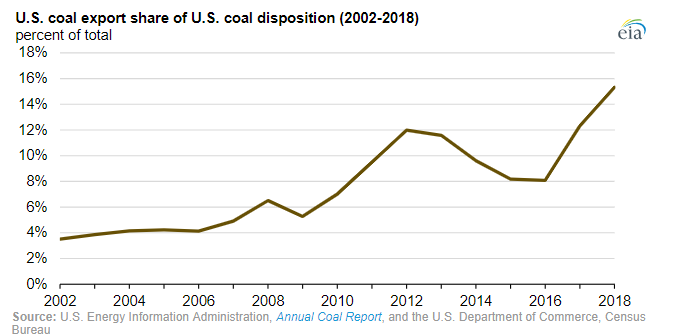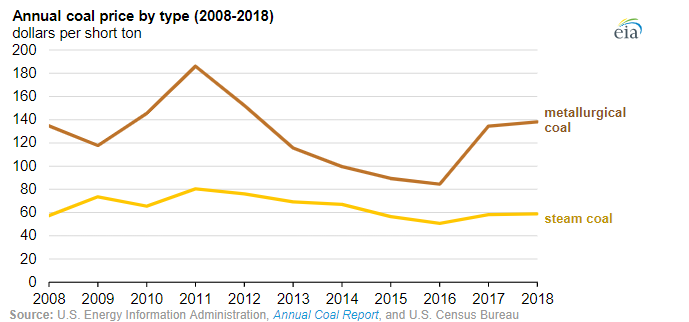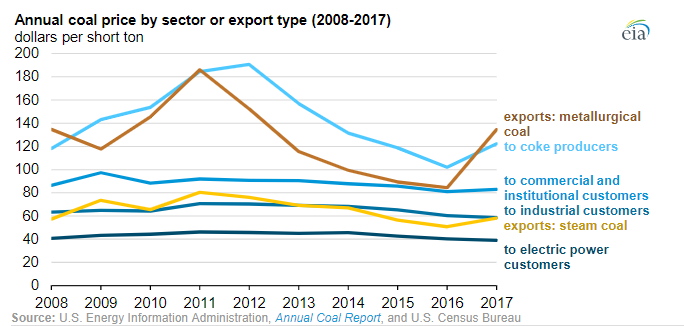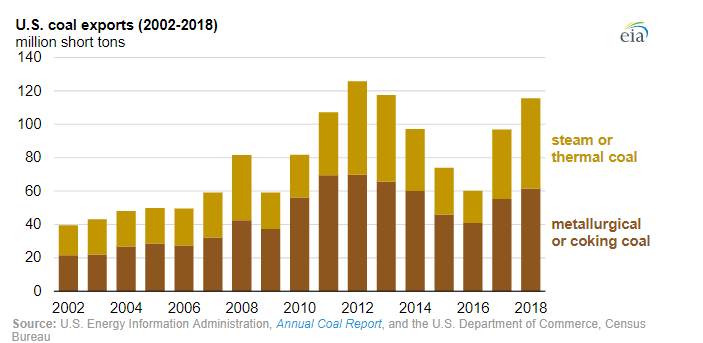Although US coal consumption has generally declined since its 2008 peak, EIA expects that US coal exports reached 116 million short tons (MMst) in 2018, the highest level in five years, according to data collected by the US Census Bureau. Exports of coal from the US have increased since 2016 as international prices have made it more economic for US producers to sell coal overseas.

In 2018, the US exported 15% of its coal, and the remaining 85% was sold to end-use markets, primarily power sector and industrial customers. Coal exports have increased during the past two years, driven by increasing international coal demand, and in 2018 accounted for the largest share of total US coal disposition on record.
The US exported 54 MMst of steam coal and 62 MMst of metallurgical coal in 2018, according to data provided by the US Census Bureau.

Strong international demand has led to export prices increasing in recent years; coal export prices have increased in each of the past two years to average $59 per ton for steam coal and $138 per ton for metallurgical coal in 2018.
Metallurgical coal, which is used in the steel-making process, has greater value than steam coal, which is used to create heat for industrial processes, commercial use, and utility-scale electricity generation.
Asian countries account for about 75% of metallurgical coal trade in the world, and increased demand in China and India in 2017 and 2018 has helped to push metallurgical coal prices up throughout Asia.
US steam coal exports to Asia have also increased during the past two years, from 5 MMst in 2016 to 20 MMst in 2018, or nearly 40% of total US steam coal exports. India, Japan, and South Korea were the primary Asian destinations for US steam coal.
US steam coal exports have also increased to some new markets such as Egypt, Thailand, and Ukraine in recent years, providing some potential for market growth.

Price data from EIA’s Annual Coal Report show that foreign coal trade appears to drive the market for US metallurgical coal. The volume of metallurgical exports has grown to triple the level of domestic coke producer demand for metallurgical coal.
Steam coal export prices also respond to international price movement, but they have a more limited impact on domestic coal prices because steam coal exports account for less than 10% of steam coal demand.





























































